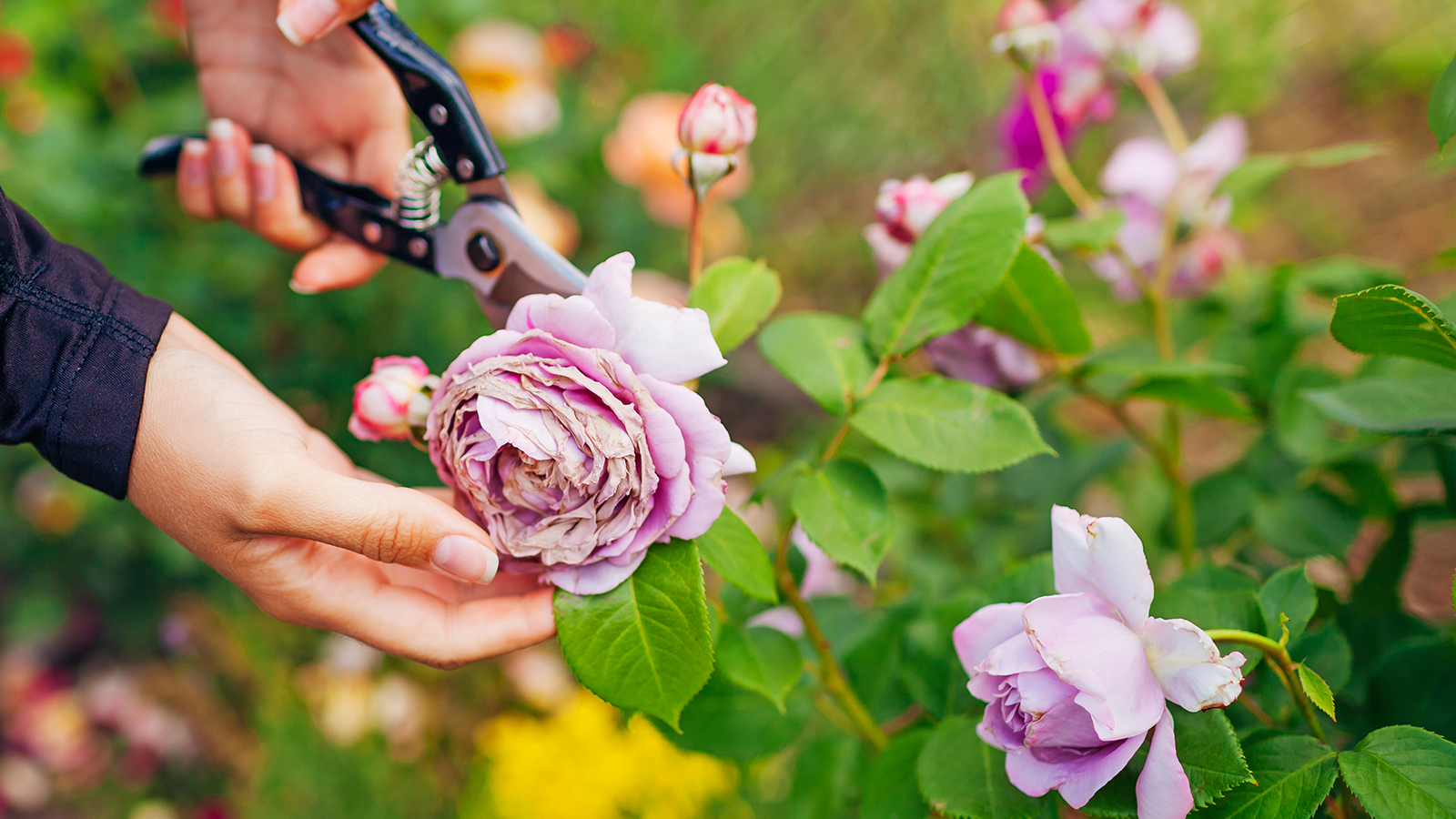6 Rose Deadheading Mistakes To Avoid If You Want Blooms All Summer Long
Deadheading roses is key to maximizing their flowering period. However, these common errors will nip plants' blooming potential in the bud.

Melanie Griffiths

Growing a rose garden is one of the most glorious ways to get close to nature and enjoy a steady stream of romantic summer blooms.
Every gardener has their own ideas of the perfect way to care for their roses, but deadheading is one of the things rose experts always do to grow the best flowers.
Deadheading roses is the practice of removing spent flowers, stems, and foliage. It keeps plants happy and attractive and ensures they aren't expending energy trying to form fruit and seed. Instead, energy is redirected to forming more foliage, developing a healthy root mass, and producing more flowers.
If proper deadheading techniques are combined with good fertilizing, watering, and pest management, your roses should be prize winners and bloom all season
Inevitably, the novice gardener may make mistakes in their pruning and deadheading technique. Avoid these errors to prevent plant injury, ward off common rose diseases, and ensure more beautiful flowers.

1. Wrong Timing
When it comes to deadheading, you can pretty much prune away spent flowers at any time. That being said, there are times when the rose plant is stressed, and cutting on it can cause further stress.
Avoid deadheading and pruning during the hottest time of the day; prior to watering; when dew is still on the plant; and on overcast days, as the plant material won’t dry out.
Sign up for the Gardening Know How newsletter today and receive a free copy of our e-book "How to Grow Delicious Tomatoes".
Additionally, for roses that form rose hips, deadheading at the end of the season will remove the potential for these fruits, which are animal food and tasty when made into tea. Allow the hips to develop and wait until late winter to prune.
Finally, leaving deadheading until too late will diminish the next crop of flowers. Deadhead as the petals are faded and beginning to fall off.
2. Failing To Clean Up Dropped Plant Material
If you just let dead and spent roses, flowers, and stems lie on the ground, it could lead to future diseases and pests.
Many diseases and pests like to overwinter in their host plant’s debris. Failing to remove dead material could encourage such issues the next year. Always clean up and compost or dispose of removed rose cuttings.

3. Not Cleaning Pruners
Plant disease can occur in many ways: diseases spread by wind, insect vectors, water splash, and more. It is also possible to spread a disease from plant to plant via the pruners. This is why it is necessary to sterilize the tool before beginning to prune each plant.
Use a solution of water and bleach, or wipe the blades and handle with rubbing alcohol. There are also sterilizing solutions available for purchase.
Ideally, carry a cloth soaked in sanitizing solution as you are deadheading. Wipe the blades between each cut to prevent the spreading of disease from one part of the plant to another.
4. Using Blunt Cutting Implements
As all keen cooks know, the damage to a cut finger is much worse with a dull knife than with sharp blades. The same is true for your pruners. Rough cuts and tears on plant material invite disease and don’t close up well. Additionally, dull shears or pruners will make the job harder and take longer.
Use bypass pruners for cleaner cuts, since the anvil type crushes the plant material. Always sharpen the blades prior to cutting woody stemmed plants. There are tools for this or just run a knife steel or tool rasp along the blades.

5. Cutting In The Wrong Place
You can choose to just remove the dead rose where it attaches to the plant. This will leave a tidy appearance but doesn’t necessarily encourage new blooms.
To encourage new roses, the best place to deadhead a rose is just above a leaf node or growing joint. The little nubs on the stem are potential branches.
In some cases, you will be able to see new buds forming below the spent flower on the same stem. Cut just above this to preserve the newly forming flower.
If there are several stems of dead flowers, wait until all are dead, and then remove the main stem above the first leaf with five leaflets.
If you wish to prune the stems back to an even uniform shape, cut long stems to just above leaf or bud nodes.
6. Cutting At The Wrong Angle
Never cut a spent flowering stem off straight across; this leaves a surface for moisture to collect, potentially encouraging fungal disease.
Always cut the stem at a 45-degree angle. Make sure the angle forces water away from the bud or leaf node.
Angling it inward will cause irrigation and rainwater to flow onto the new plant material. Angle the cut so it forces water away from the bud.

Bonnie Grant is a professional landscaper with a Certification in Urban Gardening. She has been gardening and writing for 15 years. A former professional chef, she has a passion for edible landscaping.
- Melanie GriffithsEditor in Chief